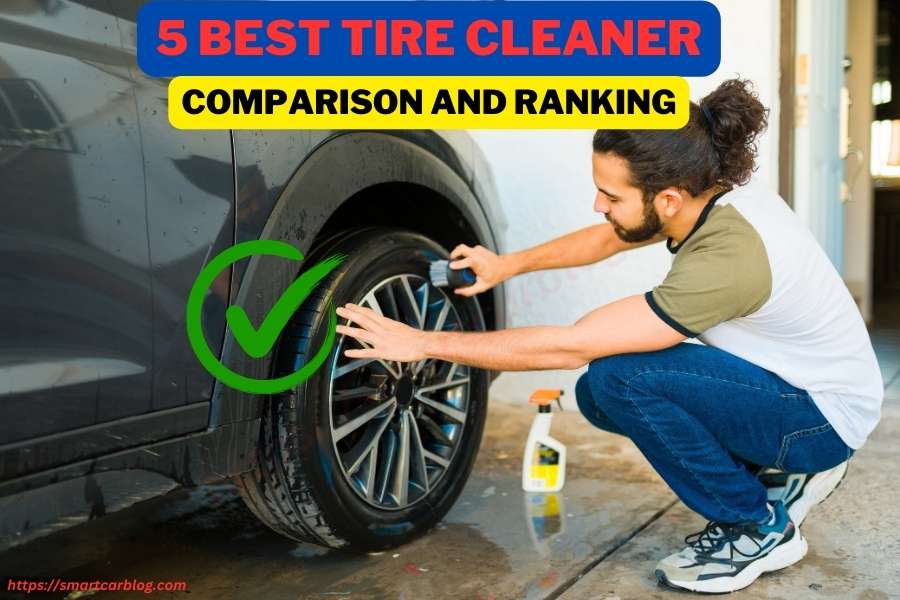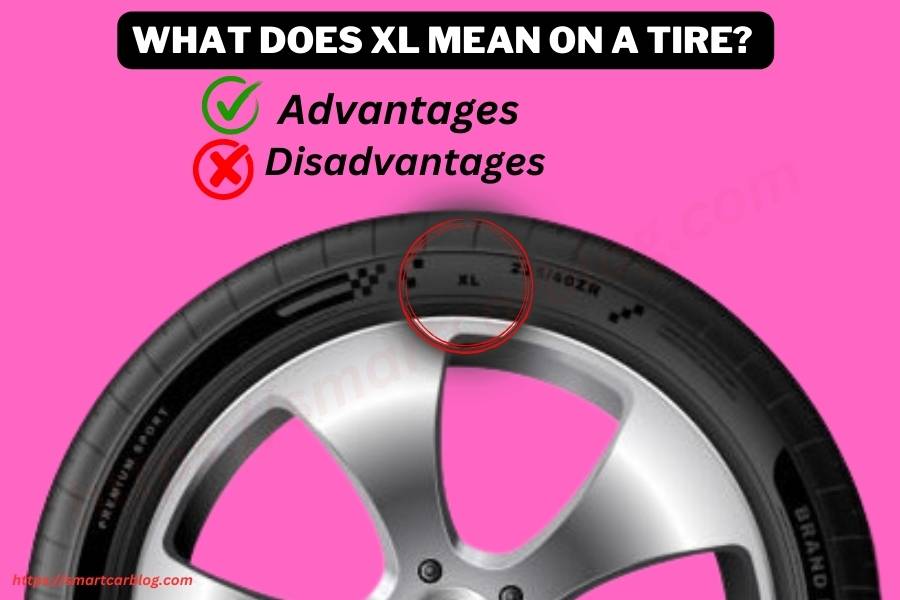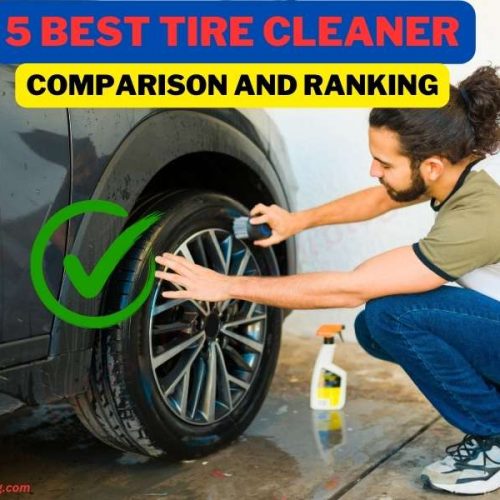Have you ever noticed the mysterious ‘XL’ marking on a tire and wondered what secrets it holds? You’re not alone. Many vehicle owners and enthusiasts are curious about these two letters that seem to carry a world of meaning. “What does XL mean on a tire?” This question might appear simple, but the answer is pivotal to understanding your vehicle’s tires and, by extension, its performance and safety.
Imagine being able to decipher these codes like a pro, confidently selecting the right tires for your vehicle, knowing precisely what you’re paying for and why. Understanding the ‘XL’ code is more than just automotive trivia; it’s practical knowledge that empowers you to make informed decisions, ensuring your vehicle is equipped with tires that perfectly match its needs and driving habits.
So, let’s dive in together and unlock the mystery of the ‘XL’ marking on tires. By the end of this article, you’ll not only understand what ‘XL’ means but also appreciate its significance in your tire selection and vehicle performance.
Table of Contents
ToggleUnderstanding Tire Codes
Before we delve into the world of XL tires, it’s essential to understand the basics of tire codes. Tires are the unsung heroes of our daily drives, silently carrying the weight of our journeys on their treads.
These codes, etched on the sidewall of your tire, are like a secret language, revealing everything from the tire’s size to its intended use. They’re not just random letters and numbers; they’re the key to understanding your tire’s capabilities and limitations.
What Are XL Tires?
Now, onto the main event: XL tires. The term “XL” stands for Extra Load. Contrary to what some might guess, it’s about something other than the tire’s size but its load-carrying capacity. XL tires are designed to bear more weight than their standard counterparts.
They’re the unsung workhorses, built to endure more, whether it’s for a family-packed SUV or a car laden with goods. Understanding the XL marking is crucial for safety, efficiency, and ensuring your vehicle performs at its best.
Does XL Tire Make a Difference?
When it comes to selecting the right tires for your vehicle, the details matter. One such detail that often goes unnoticed is the ‘XL’ marking on a tire. But does this seemingly small feature make a significant difference? Absolutely! XL tires, standing for ‘Extra Load,’ are not just any regular tires.
They are designed for vehicles that need to carry heavier loads than usual. Whether it’s a family SUV loaded for a vacation, a delivery vehicle, or a luxury car with higher performance demands, XL tires offer the additional support needed. Understanding the impact of these tires can transform your driving experience, ensuring safety, stability, and optimal performance.
What Does ‘XL’ Mean on a Tire?
What does the ‘XL’ designation on a tire signify, and why is it relevant for drivers? ‘XL’ signifies that the tire can bear a greater weight compared to a regular tire. This doesn’t pertain to the tire’s physical size but rather its load-carrying capability. XL tires feature robust sidewalls and are crafted to withstand higher inflation pressures.This enables them to support heavier loads without sacrificing performance or safety.
For those who regularly transport heavy goods or drive vehicles that are heavier, choosing XL tires could be a game-changer. It’s about harnessing the right support for your vehicle’s needs, ensuring a smoother, safer ride.
What is the Difference Between XL and SL Tires?
When navigating the world of tires, you’re likely to encounter a myriad of terms and acronyms. Two such terms that are often confused are XL and SL. So, what sets these two apart? Simply put, the difference lies in their load-bearing capacities. SL stands for Standard Load, which means these tires are suitable for most standard driving conditions and average loads.
Manufacturers design XL, or Extra Load tires, to carry heavier weights. They build these tires with stronger internal structures and allow for inflation to higher pressures. This feature is essential for vehicles that carry heavy loads or are heavier by design. It is crucial to equip your vehicle with tires that match its needs for safety, efficiency, and performance to ensure proper functioning.
Advantages of XL Tires
Now, let’s explore the advantages of XL tires. These tires are not just about carrying more weight; they bring a plethora of benefits to the table. Firstly, XL tires provide enhanced stability and handling, especially under heavy load conditions. This is crucial for maintaining control and safety on the road.
Additionally, they are typically more durable due to their robust construction. This means they can withstand more wear and tear, making them a cost-effective choice in the long run. Another significant advantage is the improved driving experience. Vehicles equipped with XL tires often experience less tire roll and better responsiveness, particularly in high-speed or challenging driving situations. For those who prioritize safety and performance, especially in larger or more heavily loaded vehicles, XL tires are an excellent investment.
Disadvantages of XL Tires
While XL (Extra Load) tires boast several advantages, particularly in terms of load-bearing capacity and stability, they also come with certain disadvantages that are worth considering. One of the main drawbacks is their typically higher cost compared to standard load (SL) tires. This can be a significant factor for budget-conscious consumers.
Additionally, XL tires can lead to a firmer ride due to their reinforced sidewalls and higher inflation pressures. This might result in a less comfortable driving experience, especially on rough or uneven roads. It’s also important to note that fitting XL tires on a vehicle that doesn’t require them can lead to unnecessary expenditure without any tangible benefits in terms of performance or safety.
Do XL Tyres Last Longer?
A common question among vehicle owners is whether XL tires have a longer lifespan compared to their SL counterparts. The answer could be more straightforward. XL tires are designed to handle extra load and are often made with more robust materials. This could potentially contribute to a longer life.
However, the actual longevity of any tire, XL or otherwise, depends heavily on factors like driving habits, road conditions, and regular maintenance. While XL tires may offer better durability under heavy load conditions, they don’t automatically guarantee a longer lifespan. Regular tire maintenance, including proper inflation, alignment checks, and timely rotation, remains crucial for maximizing the life of any tire, XL included.
How to Identify XL Tires?
Identifying XL (Extra Load) tires is simpler than you might think. The key lies in the tire’s sidewall markings. Look for the letters ‘XL’ or ‘Reinforced’ on the sidewall. This marking is typically found close to the tire size information. Besides this, XL tires also have a higher load index than standard tires, which is another number you’ll find on the sidewall.
This number indicates the maximum weight the tire can safely support. Knowing how to identify XL tires is crucial for making informed decisions about tire purchases and ensuring you’re equipping your vehicle with the right type of tire for its needs.
Vehicle Suitability for XL Tires
Not every vehicle requires or is suitable for XL tires. Manufacturers specifically design these tires for vehicles that are heavier or expected to carry heavier loads. Includes larger SUVs, trucks, and vehicles frequently used for towing or carrying heavy cargo. If your vehicle falls into these categories, then XL tires might be a suitable choice.
However, it’s important to consult your vehicle’s manual or a tire professional to determine the recommended tire type for your specific model. Using the right tires ensures optimal performance and safety of your vehicle.
Can I Use XL Tires on a Normal Car?
The question of whether XL tires can be used on a normal car is a common one. Technically, you can fit XL tires on a standard car; however, it’s only sometimes advisable. Unless your car is regularly loaded with heavy items or passengers, XL tires may not offer any significant benefits.
In fact, they could lead to a harsher ride due to their stiffer sidewalls and potentially higher costs. It’s essential to weigh the pros and cons and consider whether the specific attributes of XL tires align with your car’s requirements and your driving needs.
Do XL Tyres Use More Fuel?
One common question among vehicle owners is whether XL (Extra Load) tires lead to higher fuel consumption. The answer could be more complexion. XL tires are designed to support heavier loads and, as a result, often have stiffer sidewalls and can be inflated to higher pressures. This can sometimes result in slightly higher rolling resistance compared to standard load tires. Elevated rolling resistance may result in a slight uptick in fuel consumption.
Nevertheless, the specific effect on fuel efficiency can differ based on the vehicle, driving behaviors, and road conditions. Striking a balance between a tire’s load capacity and its potential influence on fuel economy is crucial.
Safety Considerations for XL Tires
Prioritizing safety is essential when selecting the appropriate tires for your vehicle. XL tires provide an increased capacity for carrying loads, a critical factor for heavier vehicles or those transporting substantial loads. This capability can significantly contribute to vehicle stability and safety, especially under load-heavy conditions.
However, it’s important to use XL tires appropriately. Fitting them on a vehicle that doesn’t require the extra load capacity can result in a less comfortable ride and potentially affect handling. Always consult your vehicle’s manual or a tire professional to ensure that XL tires are suitable for your specific vehicle and driving conditions.
Are XL Tires More Expensive?
When it comes to cost, XL tires are often slightly more expensive than their standard load counterparts. This is due to the extra materials and reinforced construction used to enable their higher load-bearing capacity. However, the price difference is only sometimes substantial. It’s essential to consider the long-term benefits and suitability of your vehicle.
In cases where XL tires are recommended or required for safety and performance reasons, the additional cost can be a worthwhile investment for the enhanced durability and stability they provide. Always compare prices and features to find the best tire option that fits both your vehicle’s needs and your budget.
Maintenance Tips for XL Tires
Proper maintenance is key to extending the life and ensuring the safety of your XL (Extra Load) tires. First and foremost, regular tire pressure checks are crucial. XL tires often require higher air pressure levels for optimal performance, especially under heavy loads. Maintaining the correct pressure not only enhances safety but also improves fuel efficiency and tire longevity.
Additionally, routine tire rotations should be noticed. This practice helps in even wear distribution, extending the life of your tires. Don’t forget to regularly inspect your tires for any signs of damage or uneven wear, and address any issues promptly to avoid compromising their performance or safety.
Myths About XL Tires
There are several myths surrounding XL tires that need dispelling. One common misconception is that XL tires are only for large vehicles like trucks or SUVs. In reality, they’re also suitable for smaller vehicles under specific conditions, like carrying heavy loads. Another myth is that XL tires significantly alter the ride quality. While they have stiffer sidewalls, the difference in ride comfort is often minimal for most drivers.
Lastly, the idea that XL tires are always more expensive is only partially accurate. The price difference between XL and standard tires is often marginal, and the benefits they offer can outweigh the extra cost.
When to Replace Your XL Tires?
Knowing when to replace your XL tires is vital for maintaining your vehicle’s safety and performance. Look for the tread wear indicators — raised sections spaced intermittently in the bottom of the tread grooves. When these indicators are flush with the tire’s tread, it’s time for a replacement. Additionally, be aware of the tire’s age. Even if the tread appears adequate, tires degrade over time.
It’s generally recommended to replace car tires every six years, regardless of tread depth. Regular checks for any cuts, bulges, or other visible damages are also important, as these can be signs that your tires need immediate replacement.
Future of Tire Technology
The future of tire technology is shaping up to be an exciting journey, blending innovation with sustainability. One of the most significant trends we are witnessing is the development of eco-friendly tires. These tires are made from sustainable materials and designed to reduce rolling resistance, which in turn lowers fuel consumption and carbon emissions. Another frontier is the advancement of airless tires. These tires, also known as non-pneumatic tires, promise to eliminate the risk of punctures, offering a safer and more durable option.
Smart tire technology is also on the rise. These tires come equipped with sensors that provide real-time data on tire pressure, temperature, and tread wear. This information can enhance safety efficiency and predict maintenance needs. Additionally, there’s ongoing research in developing tires that adapt to different weather conditions, offering optimal performance whether it’s raining, snowing, or sunny.
The integration of tire technology with electric and autonomous vehicles is another exciting development. Tires for these vehicles are being designed to cope with the unique demands of electric propulsion, such as instant torque and heavier loads due to battery weight. As autonomous vehicles become more prevalent, the role of tires in vehicle-to-infrastructure communication will become increasingly important.
Last Verdict
In summary, the ‘XL’ marking on a tire is more than just a label; it’s an essential indicator of a tire’s capability and suitability for certain vehicles. Standing for ‘Extra Load,’ manufacturers design XL tires specifically to handle heavier loads than standard load (SL) tires. This feature is vital for vehicles that are heavier by design or are used for carrying additional weight, including passengers, cargo, or towing. XL tires offer enhanced load-bearing capacity, better stability under heavy loads, and often a higher level of durability.
However, it’s important to remember that there might be better choices for some vehicles. The use of XL tires on a vehicle that doesn’t require the extra load capacity could lead to a firmer ride and potentially unnecessary additional costs.
As a vehicle owner, understanding what ‘XL’ means on a tire empowers you to make informed choices about the tires you choose for your vehicle. It ensures that you are not just fitting any tire but the right tire – one that aligns with your vehicle’s needs and your driving habits. Whether it’s for safety, efficiency, or optimal performance, knowing the significance of the ‘XL’ marking is a key step in tire maintenance and vehicle care.
FAQ
Q: Are XL Tires Good for Racing?
A: XL tires, designed for extra load capacity, aren’t the ideal choice for racing. Racing requires tires with high grip and heat resistance, qualities that differ from what XL tires offer. For heavier racing vehicles, however, XL tires can provide better stability.
Q: What is the Ply Rating of XL?
A: XL (Extra Load) tires come with various ply ratings, depending on the make and model. Ply rating reflects a tire’s strength and pressure endurance. Generally, XL tires have higher ply ratings than standard tires, showcasing their superior load capacity.
Q: Do XL Tires Use More Gas?
A: XL tires may slightly increase fuel consumption due to their higher rolling resistance. This is because they’re stiffer and need more air pressure. However, maintaining correct tire pressure and alignment can minimize their impact on gas usage.
Q: Are XL Tyres Noisy?
A: XL tires can be noisier than standard tires. Their stiffer sidewalls and load-oriented tread designs can lead to increased road noise. However, the noise level varies among different brands and models of XL tires.
Q: Are XL Tires Thicker?
A: XL tires typically feature thicker sidewalls compared to standard tires. This thickness helps them handle higher loads and inflation pressures, enhancing stability and durability under heavy load conditions.
Q: Are XL Tires 10 Ply?
A: Not all XL tires are ten-ply. ‘Ply’ refers to a tire’s internal layers, and while XL tires are built for higher load capacity, their actual ply rating can vary. Choose a ply rating based on your vehicle’s requirements and load capacity.
Q: What are LT Tires?
A: LT tires, meaning Light Truck tires, are designed for vehicles that carry heavy loads or tow trailers, like trucks and SUVs. They feature sturdier sidewalls and greater load capacities than passenger tires, making them ideal for demanding tasks.
Q: What is Tyre Pressure for XL Tyres?
A: The ideal tire pressure for XL tires varies, depending on vehicle and tire specifications. It’s typically higher than standard tires to accommodate the extra load. Always check the vehicle’s manual or tire sidewall for recommended pressure levels.




 Welcome to SmartCarBlog.com! I’m Rashel Miajee, The proud founder of smartcarblog.com. This is a part of
Welcome to SmartCarBlog.com! I’m Rashel Miajee, The proud founder of smartcarblog.com. This is a part of 


